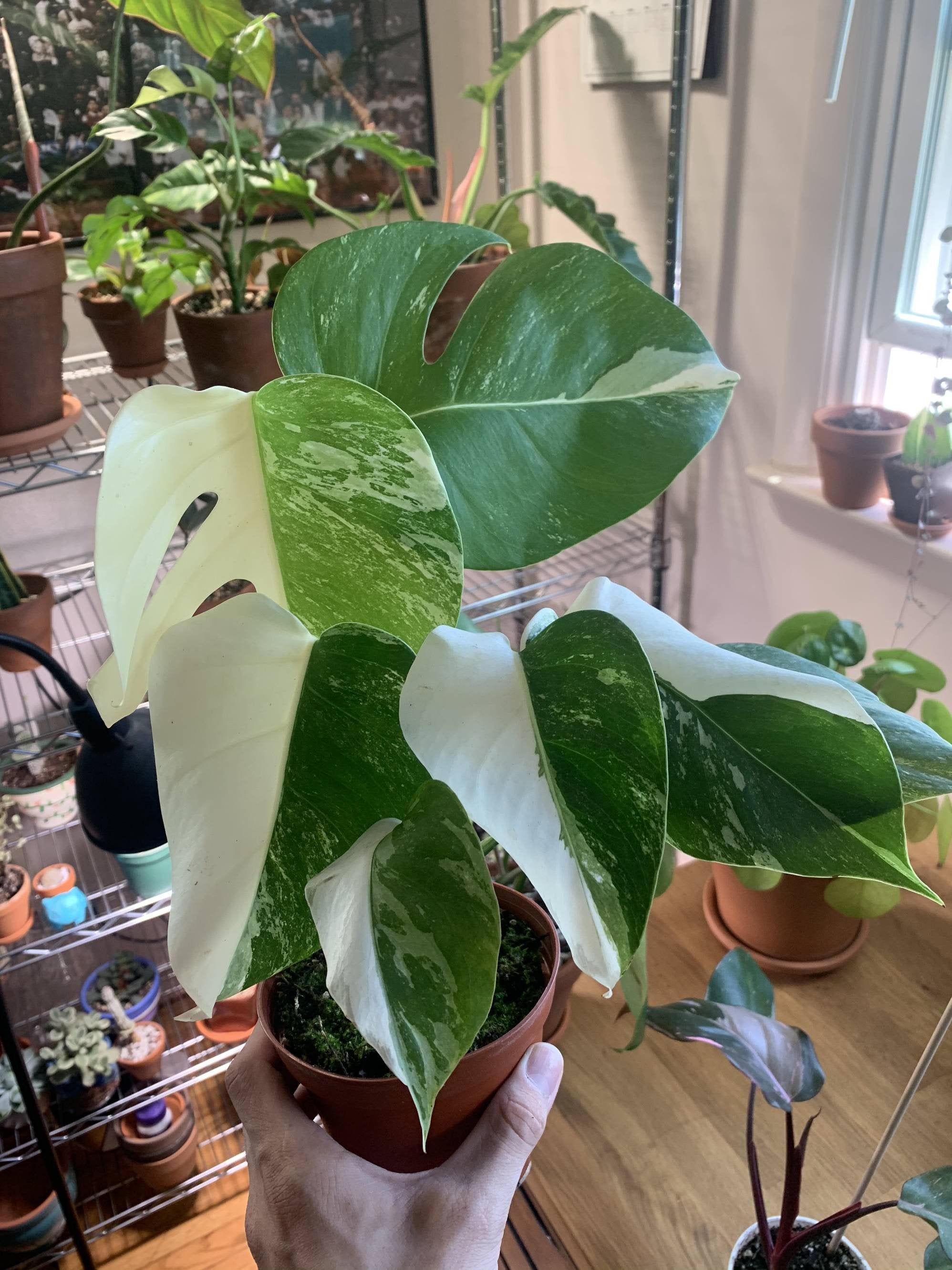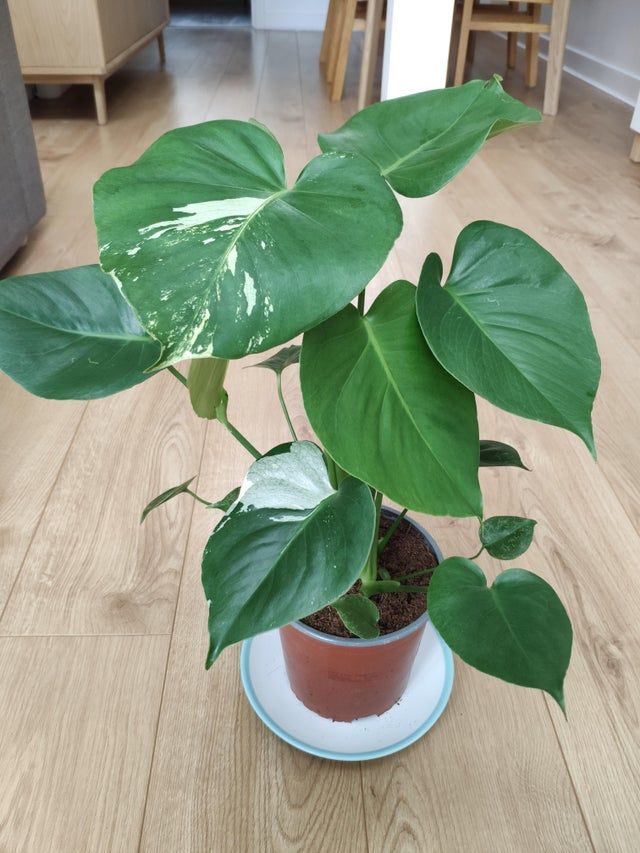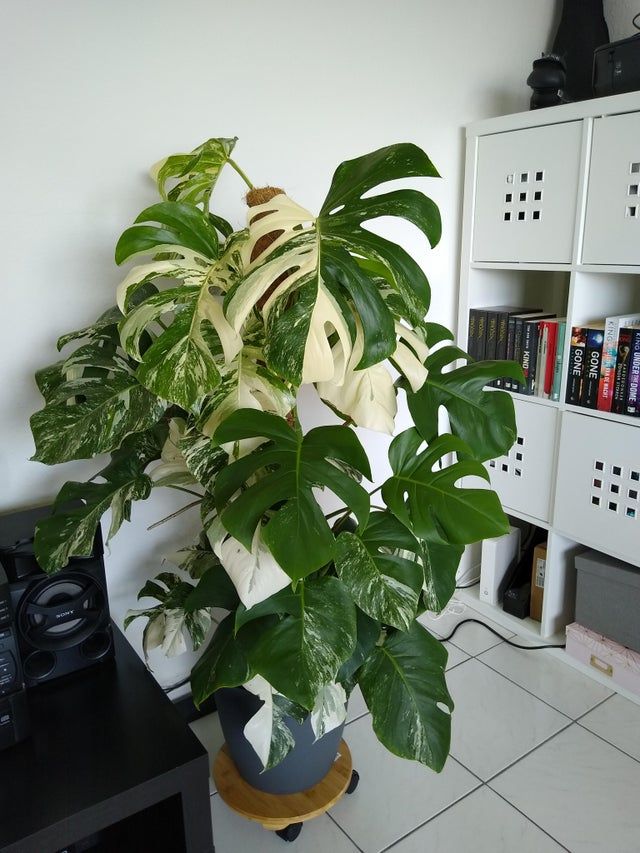How To Care For A Variegated Monstera Deliciosa

The Variegated Monstera Deliciosa has become one of the most popular houseplants in recent times and rightfully so. This species of flowering houseplant is native to South America. The Monstera plant is also known as the Swiss cheese plant, a name that refers to the plant’s development of holes and ridges on mature leaves that gives it a similar appearance to Swiss cheese.
The variegated variety of this plant is even more beautiful with uniquely colored leaves that are sure to grab anyone’s attention when they visit your home. However, since this plant is extremely expensive and hard to come by, you must know how best to care for it. In this article, we’ll cover all the basics you need to know about growing and caring for your variegated Monstera plant.
Are the care requirements for a Variegated Monstera different to the Regular Monstera?
Actually, the care requirements for the Variegated Monstera are similar in many ways to the regular solid green Monstera plant. The main difference between them is in the light requirements for these two plant varieties.
Since the white portion of the leaves on the Variegated Monstera cannot absorb light, the plant requires twice as much light in order to photosynthesize effectively. Therefore, this plant cannot thrive under low light conditions. For optimal growth, the variegated Monstera is meant to be kept under bright ambient light. Other requirements in terms of watering, humidity, temperature, and so on are similar to the regular variety of this plant.

Light
Naturally, the Monstera plant is able to adapt to various light conditions. In the wild, they grow under the jungle cover where they do not get so much direct sunlight. They usually climb up trees using their aerial roots to access more light.
For the variegated variety, you’ll need a little more light compared to the non-variegated plant. That’s not to say that they cannot grow in low light. However, if the condition is too dark, the plant may not achieve optimal growth. In poor light conditions, the variegation may not develop at all to start with and it may disappear if you move your plant from optimal to low light conditions.
When growing variegated Monstera deliciosa indoors, the plant should be placed near the brightest window in your home. This way, it can get a few hours of sunlight (usually early morning or later afternoon sun is best). In the absence of a good window with sufficient light, you can use an artificial grow light to supplement the light.
Note that long periods of direct exposure to sunlight can potentially burn the leaves of your plant and cause them to start turning brown. However, if you live in areas that get pretty dark during winters, your plant may benefit from getting direct sunlight.
The plant should be rotated periodically to ensure that all its side gets sufficient sunlight. This is necessary to promote even growth on all sides. You should also dust the leaves occasionally as an accumulation of dust often interferes with the plant’s ability to photosynthesize efficiently. Dusting the leaves also allows you to inspect the leaves for pests.
Monstera plant Soil requirements
The variegated Monstera is pretty adaptable to different types of soil. The best recommendation for this plant is about 2 to 3 parts of a good potting soil combined with 1 part of perlite. You may also add some orchid bark to the mix to improve the aeration of the soil.
Of course, there is no one way to go about this and there’s no magic mix that works for all plants. Generally, you want your potting soil to have great drainage. The quicker the soil loses water and dries out, the better for your plant. Monstera plants don’t like to sit in water-logged soil so potting soil with poor drainage isn’t good for your plant. As long as the soil has great drainage and it’s well aerated, you’re good to it.

Watering Monstera plant
Variegated Monsteras grow better in slightly moist soil. They’re tree climbers in the wild with aerial roots that grow on other plants rather than in the soil directly. This makes them quite sensitive to overwatering as houseplants. The plant will not grow properly if you let it sit in soggy soil.
As a general tip, you should check the top inches of your plant to see if it is dry before giving the plant a drink again. Another trick is to let all the water escape through the drainage holes when you water, then wait until the top quarter of the soil is dry before repeating it.
Temperature and humidity
The general temperature requirement for variegated Monstera plants is between 18 to 27C. As far as humidity goes, the variegated variety is more tolerant of high humidity conditions compared to the regular type. It can be placed in a humid bathroom and regular misting with warm water isn’t a bad idea for this plant.
Of course, given the fact that the variegated Monstera is quite expensive, you might want to keep an eye on the humidity to avoid overdoing or undergoing it. The optimal range is around 50% humidity. If your home gets less than this consistently, you may need to run a humidifier to keep your plant healthy.
Fertilizing Monstera plant
Naturally, the Monstera Variegata grows slower compared to other plants in the species. This means it does not need a lot of fertilizer to grow properly. It can make do with a little diluted liquid fertilizer. This should be done about once every month during the growing season.
Make sure you’re not overdoing the fertilization. Even if the plant isn’t growing as much as you want it or looking its best, consider adjusting other conditions such as light or water first instead of trying to boost growth with fertilizer. Also, there is no need to feed the plant during the winter months when it is inactive. The extra nutrients won’t do the plant any good during the period.

Pruning your Monstera plant
The Monstera plant does not really need to be pruned like many other houseplants. However, you should inspect the plant regularly to get rid of dead leaves. Also, some of the leaves may turn completely white. These are also known as full moon leaves and they should be removed from the plant. They only sap off the energy of the plant and will eventually die off on their own. It’s best to remove them as soon as you notice them.
Similarly, if the variegated leaves start to revert to a full green color, you may consider pruning them as well. Sometimes, this is caused by low light conditions, and simply moving your plant to a brighter location may fix the problem. In some cases, the problem is more permanent, and pruning the reverted leaves might be the only option. Pruning usually works and the plant is likely to resprout with proper variegation afterward.
Can You Grow Variegated Monstera From Seed?
Many people ask whether you can grow variegated monstera from seed. The answer is no - variegated monstera cannot be grown from seed. This is because the variegation is caused by a mutation in the plant's DNA, and this mutation cannot be replicated through seed production. Instead, if you want to grow a variegated monstera, you will need to purchase a cutting or clone from an existing plant. While this may seem like more work up front, it is the only way to guarantee that your new plant will be variegated. And trust us, it's worth the extra effort - a variegated monstera is a truly stunning sight to behold!
Conclusion (Should I buy a Variegated Monstera?)
Variegated Monstera plants are beautiful, unique and definitely add a wow factor to any plant collection - but they come with a price tag to match. Here's what you need to know before you decide whether to buy one. First, let's talk cost. A Variegated Monstera will set you back anywhere from $100 to $1,000, depending on the size and rarity of the plant. That's a big investment, so be sure you're ready to commit before you take the plunge.
Second, these plants are relatively high-maintenance. They require bright, indirect light and consistent moisture levels to prevent their leaves from browning or burning. If you're not prepared to provide the care they need, you may want to consider another plant for your home.
Finally, Variegated Monsteras can be tricky to find. They're often sold out at nurseries and garden centers, so you may need to do some searching online to track one down. But if you're patient and willing to invest the time and money, a Variegated Monstera is a truly stunning addition to your home.